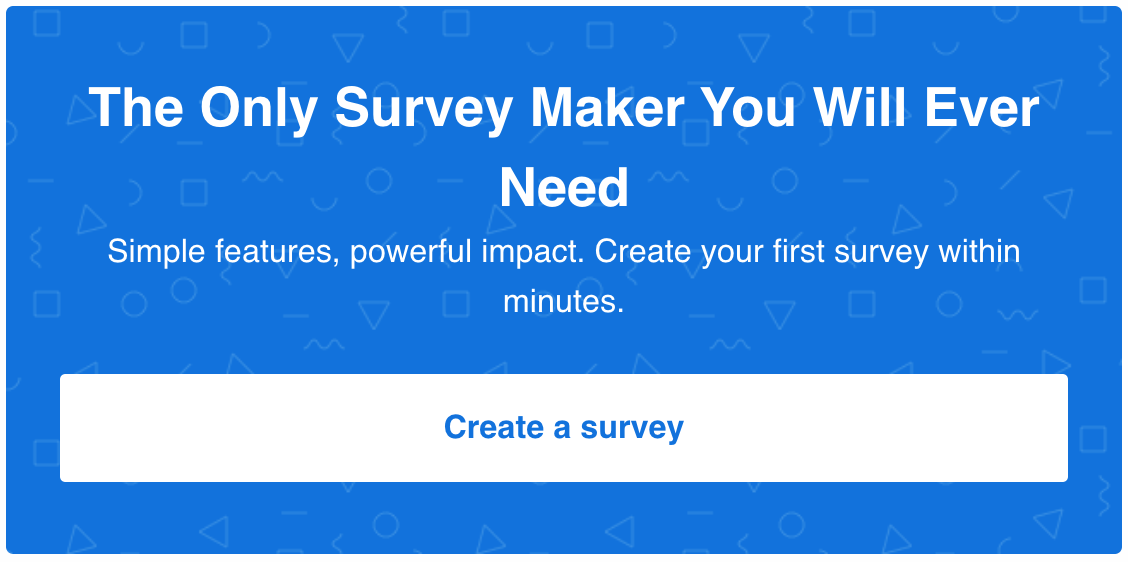Patient satisfaction survey is an invaluable asset to your healthcare organization. Getting honest feedback can help you understand the strengths and weaknesses of your service.
If you want to use patient satisfaction survey results as a guide to your healthcare organization development and decision making, you want to make sure these surveys are conducted properly. This largely depends on the questions you ask and the way you ask them.
Sure, you can google “patient satisfaction survey” and you’re likely to find dozens of print-ready templates. In this guide, however, we will fix some common mistakes you can find in these cookie cutter surveys and show you how to ask the right questions to get useful feedback.
Is going online a better option?
Printing and handing out surveys to the patients as they walk out of the clinic seems like the easiest way to get them to give you quick feedback. You can ask them to fill it out straight away and it takes only five minutes. But emailing your survey and having patients fill them out online has its perks as well.
1. You will give them time
Many visits to the doctor aren’t necessarily pleasant. You cannot always guess how patients feel after the exam, even if things went smoothly. Emailing patients the survey allows you to let them blow off some steam or go about their days and schedules as they planned. This way, they will be able to fill out the patient satisfaction survey when they have enough time, in a comfortable environment of their home. In this setting, their answers can be well-thought out, while their suggestions and comments are more likely to be detailed.
2. It is easier to analyze results
Instead of going through a batch of papers and importing data manually, with online patient satisfaction survey, all the data is already in your computer and calculating and analyzing it is takes only a few clicks.
3. It assures anonymity
Responding to question from the privacy of their home, patients also feel more comfortable about the confidentiality of data. If you use a good survey software (we will get to it in a minute), you can explain to the patients that their answers are collected on a separate platform that does not connect respondents to their email address and doesn’t gather any of their personal data. Good survey software usually includes GDPR compliance as a feature.
Now that we got this out of the way. Let’s see how to ask the right questions.
How to make a reliable customer satisfaction survey
One of the most popular ways of measuring perceptions, attitudes, and opinions is the Likert scale. Named after its creator, psychologist Rensis Likert, this type of survey allows you to move away from simple answers like yes/no, good/bad and nuance the approach to your patients’ answers.
With the Likert scale, respondents can choose between 3 and 7 degrees of scoring their impressions and opinions about your clinic, allowing you to understand which areas require prioritizing in development and improvement.
Now, one of the most important things in a survey is to get all the answers and to get answers that reliably reflect your patients’ opinions. In order to do that, your survey should be clear, concise, and if it takes more than 10 questions, chunked into logically ordered sections.
It is also important to minimize potential bias – both in questions and answers. You may have seen that many surveys consist of a series of statements and various levels of agreement as offered responses. Our recommendation is to avoid this. Stick to the neutral questions and Likert scale answers that reflect the question. If it seems a bit complicated, don’t worry.
We created a mock patient satisfaction survey to show you all the best practices. Our survey consists of both quantitative and qualitative questions. While quantitative close-ended questions seek to turn answers into numbers, qualitative open-ended questions seek to explain the reasons behind these answers and numbers. So let’s begin.
How to make a customer satisfaction survey
Here, you can access the patient satisfaction survey we created on LeadQuizzes platform. Now, we will walk you through it.
Start off by creating a landing page. Since you can embed this quiz in your email, this would be the first page your patients see when they open the message from you. Once they click, they will be taken to a full-screen landing page.
The landing page should clearly describe what the survey is about, and describe its goal and the importance of the patient’s opinion. This is also a good place to assure respondents that their answers will remain anonymous and confidential.
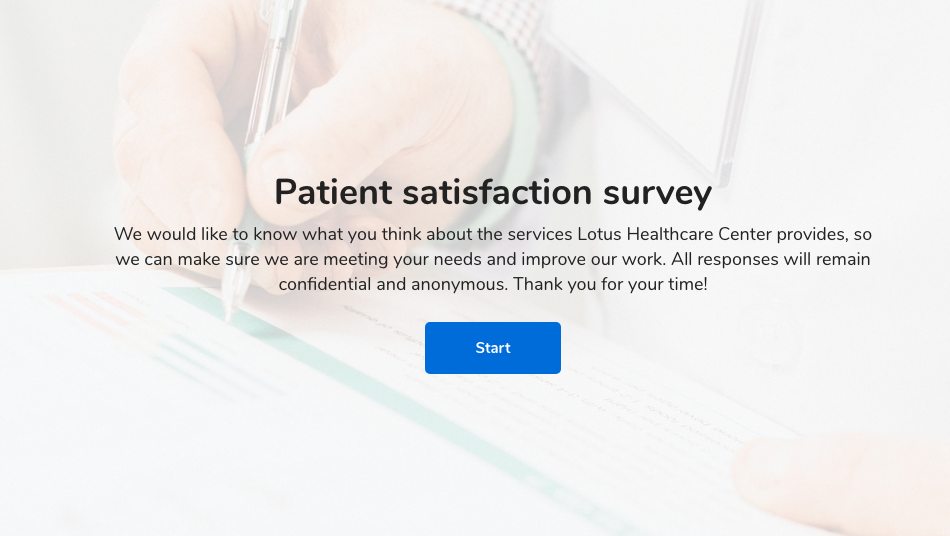

We separated this survey into 4 sections:
- Ease of getting care
- Appearance and privacy
- Waiting time
- Staff and medical provider
As you can see, these sections logically follow the patient’s experience with a clinic – scheduling their appointment, arriving at the clinic, waiting for the exam, and finally interacting with a medical provider.
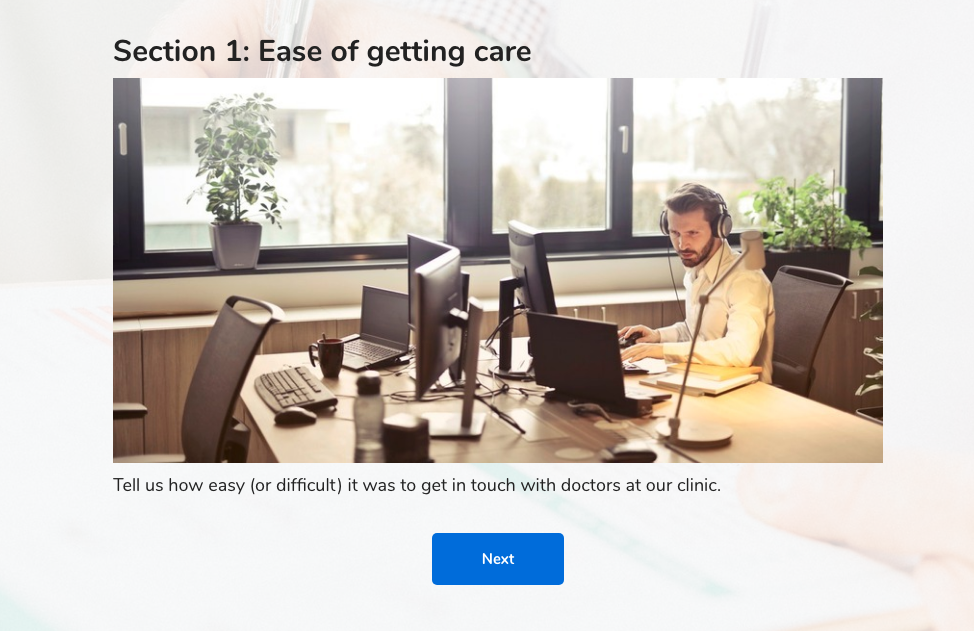

The first section refers to scheduling. You want to know how easy it is to get in touch with the clinic, and how long it took between the call and the exam. This will allow you to understand whether your service is quick enough and whether you need more staff. Also, there is a question about the clinic’s working hours – you want to make sure they are convenient for your patients.
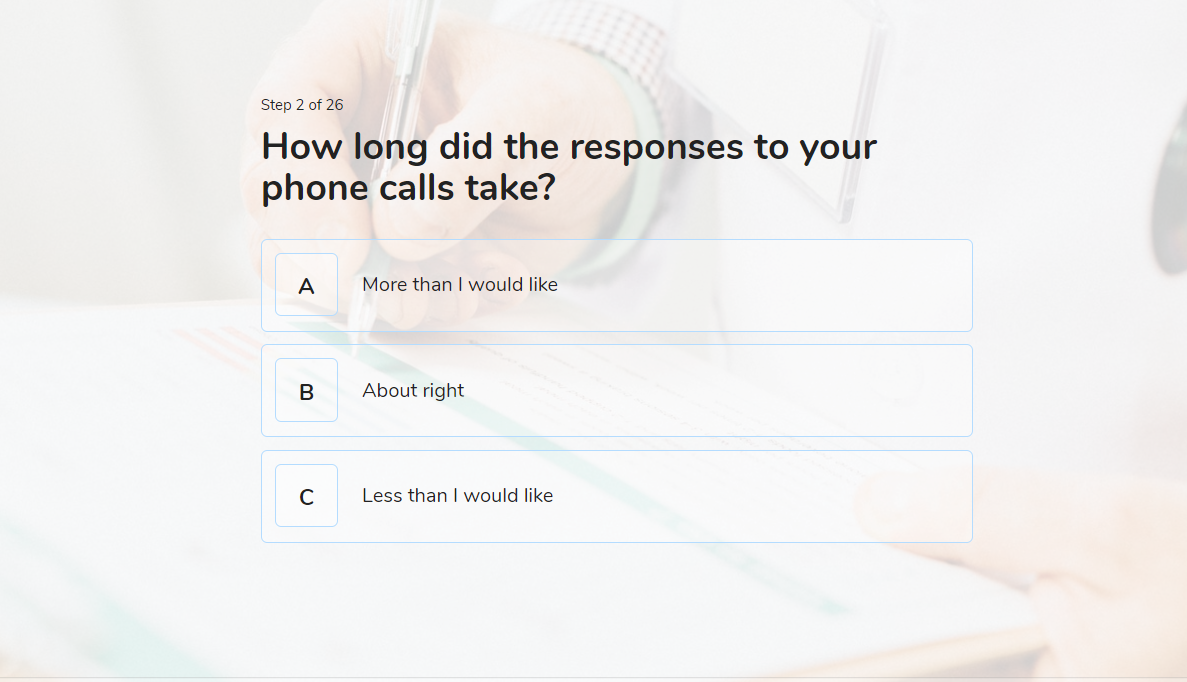

We offered three possible answers in the first question, and five answers in the question referring to the speed of scheduling an appointment.


Section 2 refers to the appearance of your clinic. You want the clinic to look clean, tidy and have a pleasant, private atmosphere.
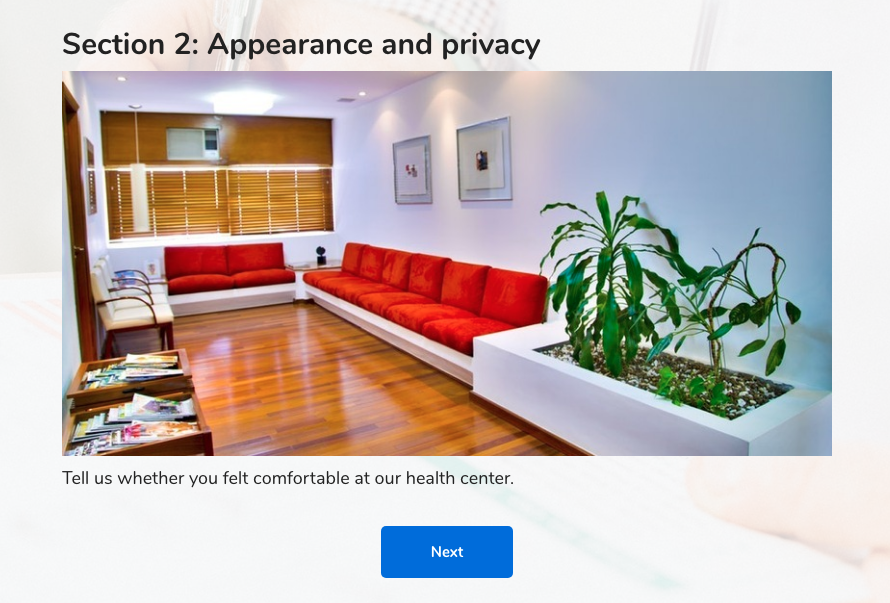

The questions we used in this section refer to the hygiene, ease of orientation in the clinic, general atmosphere, and confidentiality. Here’s one example – notice how we adjusted the answers to the specific question.
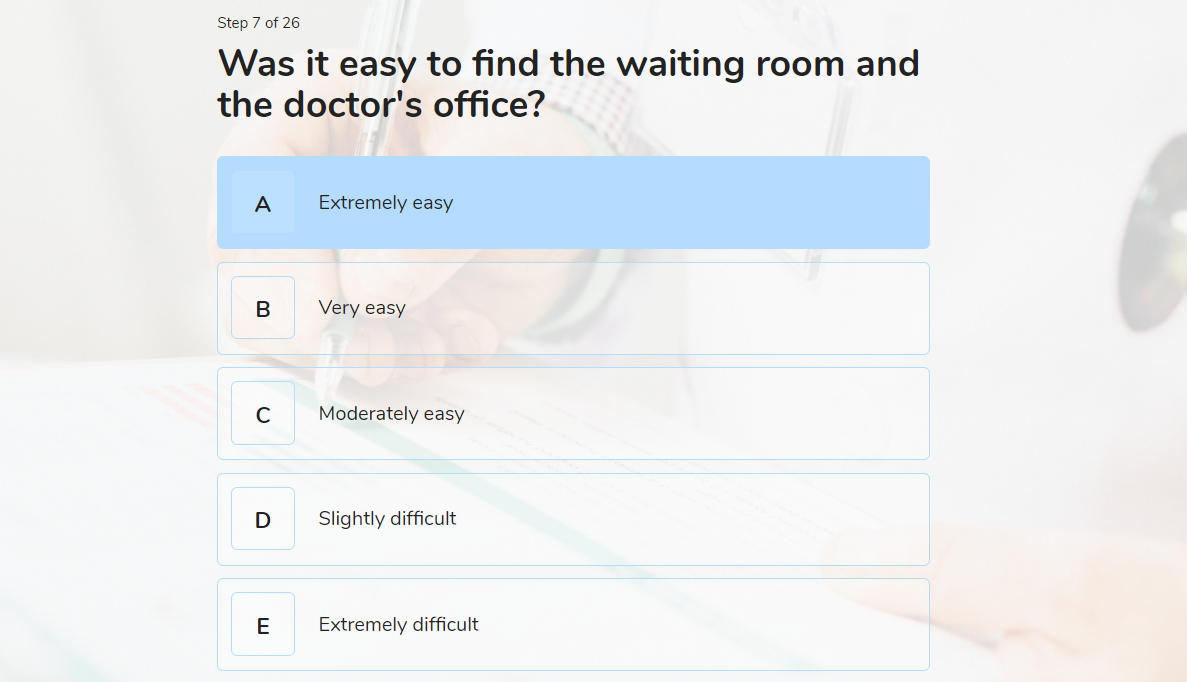

The next section consists of questions related to the notorious issue among healthcare providers – waiting. In general, people don’t want to spend too much time in the waiting room once they schedule an appointment, or even if they walk-in. However, most of them want to spend enough time in the exam room.
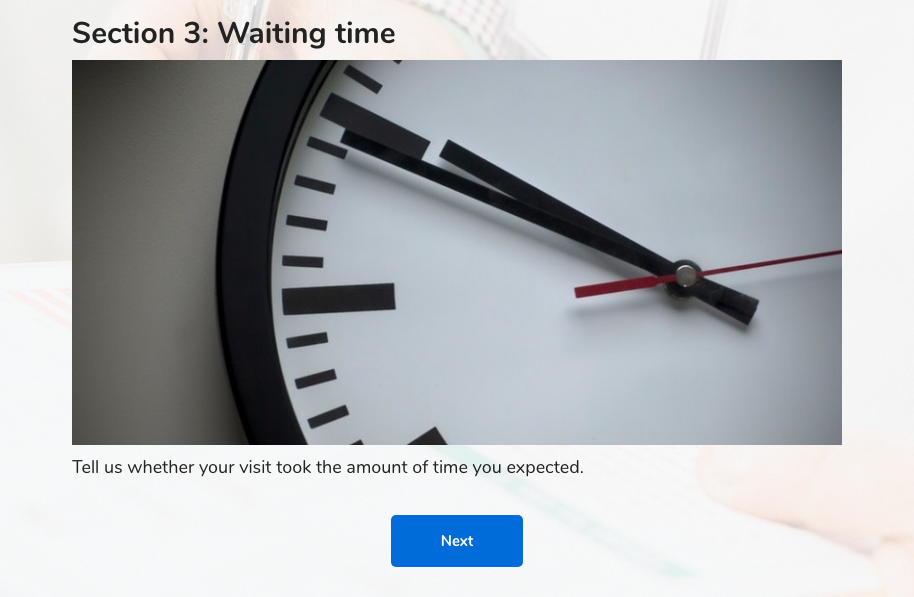

This section has two questions, both with three answers.
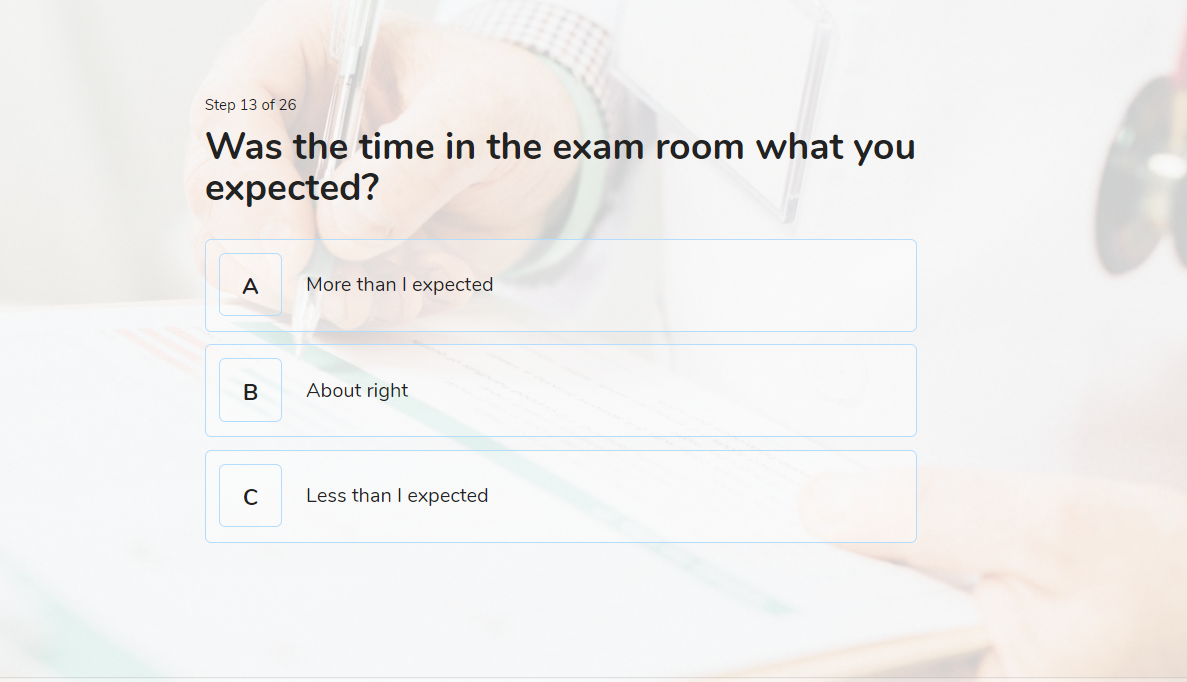

The fourth section, and the largest one, refers to the quality of your service once the patient is in the exam room. You want your medical staff to treat patients kindly, with respect, answer all their questions and soothe their concerns, and follow the protocol of your healthcare organization.
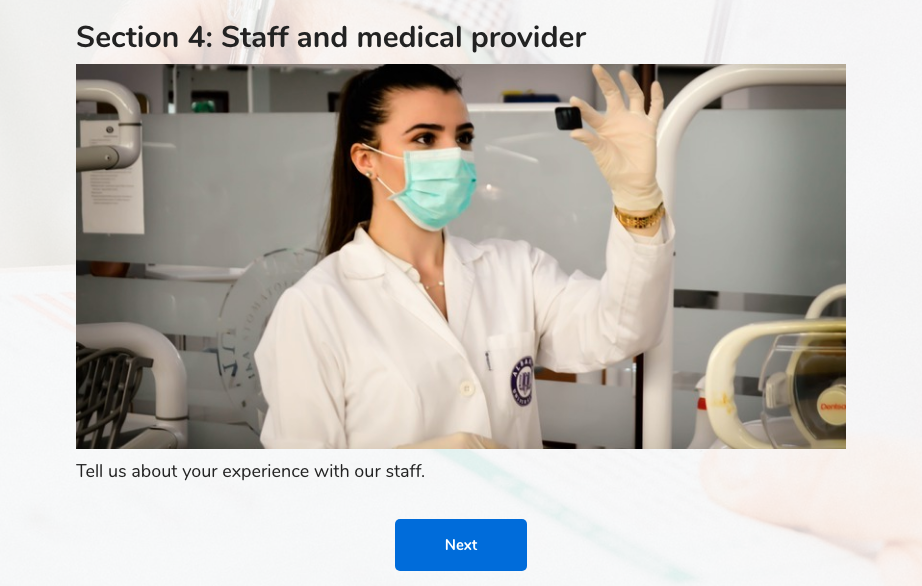

This section has nine questions – six are close-ended and three are open-ended. Here’s a question refering to the quality of communication with a patient.


This question, for example, has only three degrees and the option of “not sure,” since it refers to the protocols that are not necessarily known to the patient.


As the survey is nearing the end, you can have an optional question to determine which medical provider the patient saw that day. You can go with a general description, or by medical staff’s name.
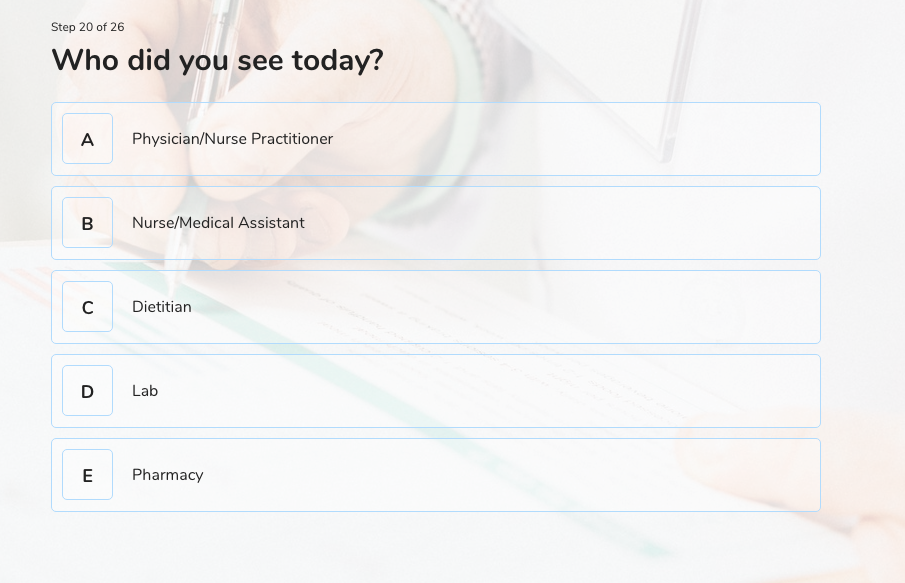

Here is an example of an open-ended question, where the patient has a chance to add comments and suggestions that will clarify the answers they have previously given. Optionally, you can offer respondents to call them about their comments – in case they were extremely unsatisfied or have any dilemmas. We did this by creating a logic branching question. The patient who responds negatively will be taken to the final page, while the patient who expresses the wish to communicate further will be taken to this form.
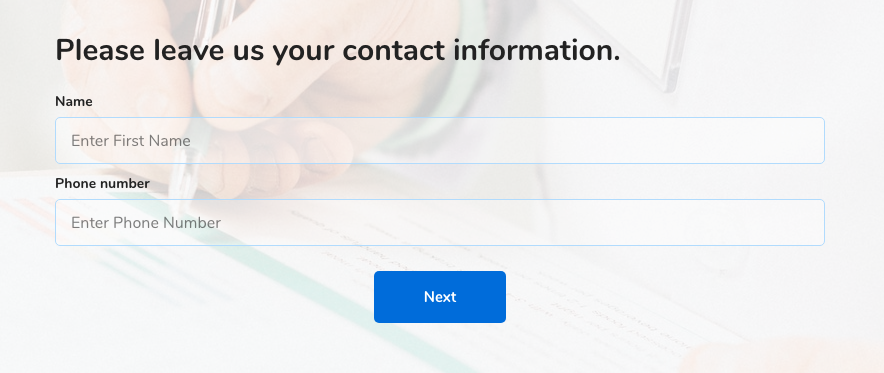

If you want to take a look at the full survey, you can find it here.
Conclusion
If you like how this customer satisfaction survey looks like, and you want to make one on your own, you can do it by using LeadQuizzes’ survey maker tool.
But making surveys is not the only thing you can do with LeadQuizzes – you can make quizzes and use them to get new patients and multiply your clinic’s revenue.
With a hormone imbalance quiz advertised on Facebook with a 50-mile radius, Rejuv Medical clinics generated 947 email list subscriptions that resulted in 30 consultations and 15 new patients. It brought them $18,000 in new revenue.
Danny Johnson created an adrenal quiz that would help people understand if their adrenals were functioning properly or not – generating more than 6,000 sign-ups in only one month. The cost of each sign-up? $0.24!
If you want to give LeadQuizzes and your clinic a shot at new patients, just click below and try it for free!
